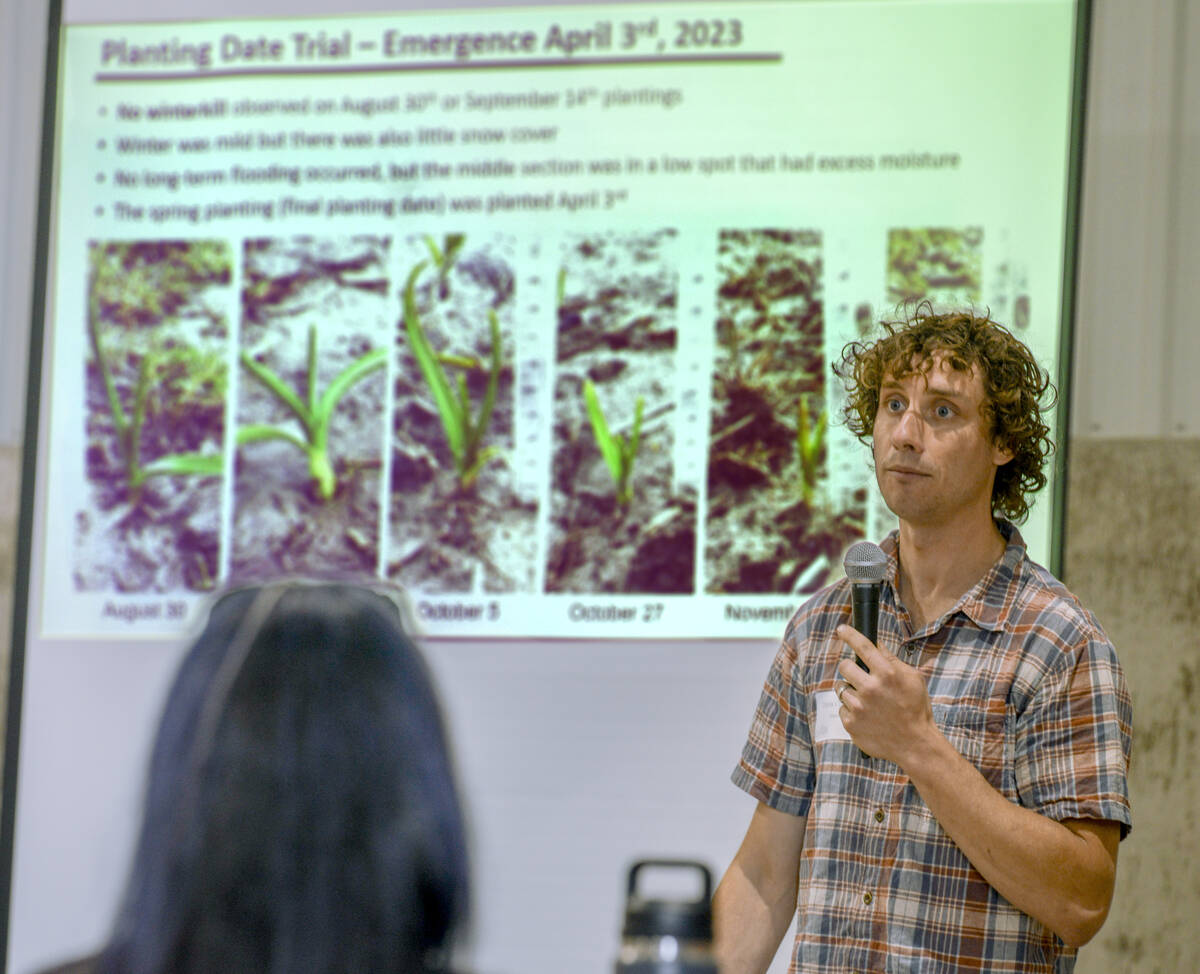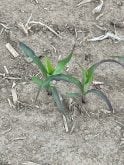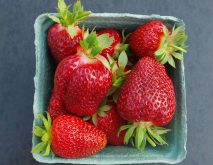Planting garlic in late August could offer producers an extra six weeks of planting time, expanding their window of opportunity.
Why it matters: Garlic is usually planted later in the fall by which time the weather can be challenging as far as moisture and cold.
“The fear of planting too early is that the plant is going to bolt, it’s going to put up too many leaves, and those leaves are going to get hit hard by winter kill,” said Travis Cranmer, a vegetable crop specialist at the Ontario Ministry of Agriculture, Food and Agribusiness. “Then there’s not going to be enough energy in that clove the following spring to put up new leaves.”
Read Also

Packer buys Green Giant, Le Sieur veg brands from U.S. owner
A Quebec-based processor’s deal to buy the Green Giant and Le Sieur packaged and frozen vegetable brands in Canada from a U.S. owner clarifies the status of two popular retail brands grown by Canadian farmers.
Cranmer updated growers at the Garlic Growers Association of Ontario meeting and field day June 7 about his ongoing planting date trials.
2022-2023 trials
- Planted near Dashwood on seven dates, Aug. 30 to Dec. 3 2022 and April 2023
- Four repetitions with 30 cloves per plot and the first frost occurring on Oct. 13, 2022.
- Results:Garlic planted before frost had strong emergence and no winter kill.
- Late October and November-planted garlic faced high moisture and increased winter kill.
- Aug. 30 had the highest average bulb weight, but “you could plant up until the end of October and there’d be no decreases in yield,” Cranmer said.
2023-2024 trials
- The trial was expanded to 75 cloves per five-row-per-plot across 11 replicated treatments, extending the late fall planting to Dec. 11 and spring to March 28.
- Cover crops and intercropping introduced to protect soil and limit weeds. Oats were seeded at 100 lbs/ac. and 200 lbs/ac. into Aug. 30 and Oct. 3 garlic.
- Crimson clover was added to November garlic on March 28 after a mild winter.
- South-side plots experienced excess water during the October and December plantings.
- Results:August garlic outperformed 2022 results, with vigorous garlic growth and well-established oat cover in November, especially in double-rate plots.
- August intercropped garlic was slightly smaller than garlic-only, as a mild winter meant a resurgence of the cover crop in spring.
- December-planted garlic had delayed or limited emergence likely due to oats impacting yield. It caught up by harvest
- Oct. 4 garlic-oats plot experienced winter kill and provided minor weed suppression; however, given the low weed pressure, its impact was negligible.
- Spring-planted crimson clover was intended to reduce May-June weed pressure, but it competed for moisture and lowered garlic yield despite drip irrigation and drip tape across the plots.
- Dry weights remained consistent for August to mid-October garlic, with a yield dip in Oct. 24 planting, likely due to soil moisture saturation, before rebounding in November.
2024-2025 trials
- Earliest planting was pushed to Aug. 21. Oats, Sorghum Sudangrass and crimson clover planted. One spring clover treatment was added.
- Planting conditions varied greatly from 23 C on Aug. 21 to 45 cm of snow for the Dec. 2 planting.
- Results: Yield won’t be known until July harvest.August and September plantings grew well on visual inspection. October and November garlic was stunted and spring-planted garlic underperformed.
- The oats winter-killed as expected, but weed suppression success varied with increased weed pressure.
- Sorghum Sudan grass winter-killed but failed to provide effective weed control, while weed pressure caused spring crimson clover establishment to struggle.
- Overwintering fall crimson clover’s establishment rate would outcompete the garlic and affect yield.
Cranmer is observing some growers planting earlier, and in preparation for the 2025-2026 trial, he invited grower input on cover crop options and planting dates.













